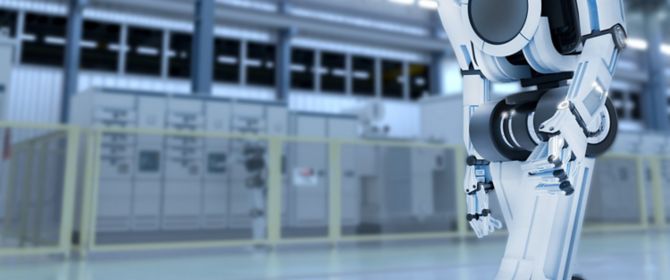“The new cellular network transforms digital interaction as we know it”, says Alex Holt, Global Head of Telecoms & Media at KPMG. 5G connects not only people but objects as well, and does it in a blink of an eye.
Sliding down an icy slope at the speed of sound on two impeccably waxed skis while an audience of thousands roars around you is one of those things most of us haven’t experienced. You can only imagine, right? Enough of this imagination nonsense, thought the masterminds behind the 2018 Olympic Games in Pyeongchang. Thanks to an elaborate combination of GPS sensors, video cameras and the new 5G network spectators could experience the games from a completely new point of view: that of the olympians.
The 5G network is the latest generation of cellular networking. It has three main properties, says Eetu Prieur, Head of Mobile Technologies at telecommunications company Elisa. Firstly – and this will probably not come as a surprise – it’s extremely fast. At the moment the speed of mobile data transfer is at best somewhere around one gigabit per second. With 5G the speed of data transfer will be ten times faster than it is now.
Secondly, 5G has very short latencies. Via 4G it takes approximately 30 milliseconds to transfer data. With the 5G network, however, the latency will drop to one millisecond. According to Prieur this enables much faster and more precise remote control of for example cars or shipping containers. Thirdly, 5G enables the Internet of Things (IoT). Thanks to the new network, the amount of interconnected devices will multiply by a hundred.
So in the near future, we’ll be able to watch mind-bogglingly high resolution videos and let the lightning-like speed of data transfer soothe our impatient minds. But what does all this mean?
"Mobile networks are the skeleton for current civilised societies, says Eetu Prieur. If you forget your phone somewhere, the rest of the day is doomed. Now imagine if every network ceased working – the whole corporate world would be helpless. When 2G emerged in the 1990’s, it more or less transformed mobile networking. A few decades later 5G is about to do the same, but the volume has been turned up.
“5G is the fundamental platform for digital change”, declares Alex Holt. 5G delivers the promise of the fourth industrial revolution and transforms interaction as we know it, he says.
“We anticipate 5G having a tremendous impact on productivity across multiple sectors. It allows people to be removed from offices but still have access to fabulous edge computing capabilities”, Holt estimates. Edge computing refers to moving a computer closer to the origin of the data, which reduces the latency it takes to fetch data from a cloud service.
5G is the fundamental platform for digital change.
Teaching machines to beat human intelligence
Experts have high hopes of 5G’s business potential, and there are statistics to back them up. For example according to telecommunications company Ericsson’s 2017 report on 5G’s business potential, 5G-enabled revenues offer a growth opportunity of 34 percent that’ll be worth over 580 billion US dollars by 2026.
Although 5G in itself is an impressive phenomenon of the digital age, it paves way for others, too. 5G enables fast transfer of massive amounts of data, which is handy, as data is the cornerstone of machine learning. In order to transfer all the data machines need to learn, we need as much bandwidth as possible, says tech company Nvidia Finland’s Managing Director Mikael Honkavaara.
“If previously we’ve been able to transfer bucketfuls of data, we can now replace the bucket with a tank”, he illustrates. Once there’s enough bandwidth, the quality of the data improves significantly. It will be possible to handle larger datasets, even ones in motion, in real time.
Honkavaara emphasises that machine learning and artificial intelligence are not the same thing, although people often use A.I. as an umbrella term for anything that has to do with digitality and intelligence.
If previously we’ve been able to transfer bucketfuls of data, we can now replace the bucket with a tank.
The somewhat dystopian ideal is that at some point in the future artificial intelligence is able to replace human intelligence. While it may be partly doing so already with for example chatbots and facial recognition software, machines are still in the phase of learning. Machines need to be fed as much data they can digest, and even then they might look at an image of the Pope and think that they’re seeing two dogs.
In order to make a machine learn something three things are crucial: manpower, a large amount of data and a lot of computing power, Mikael Honkavaara says. If you have these, put them into use now. Start today, not tomorrow, and definitely not next year, Honkavaara prompts. Things move so fast it’s impossible to stay afloat if you just sit and wait.
“If I were a business executive with any usable data, I’d hire someone solely to come up with a plan on what to do with it. You need to be aware of what the rest of the world is doing and learn while at it. Otherwise you’ll stay behind”, he says.
Download the View magazine to view the whole article.



